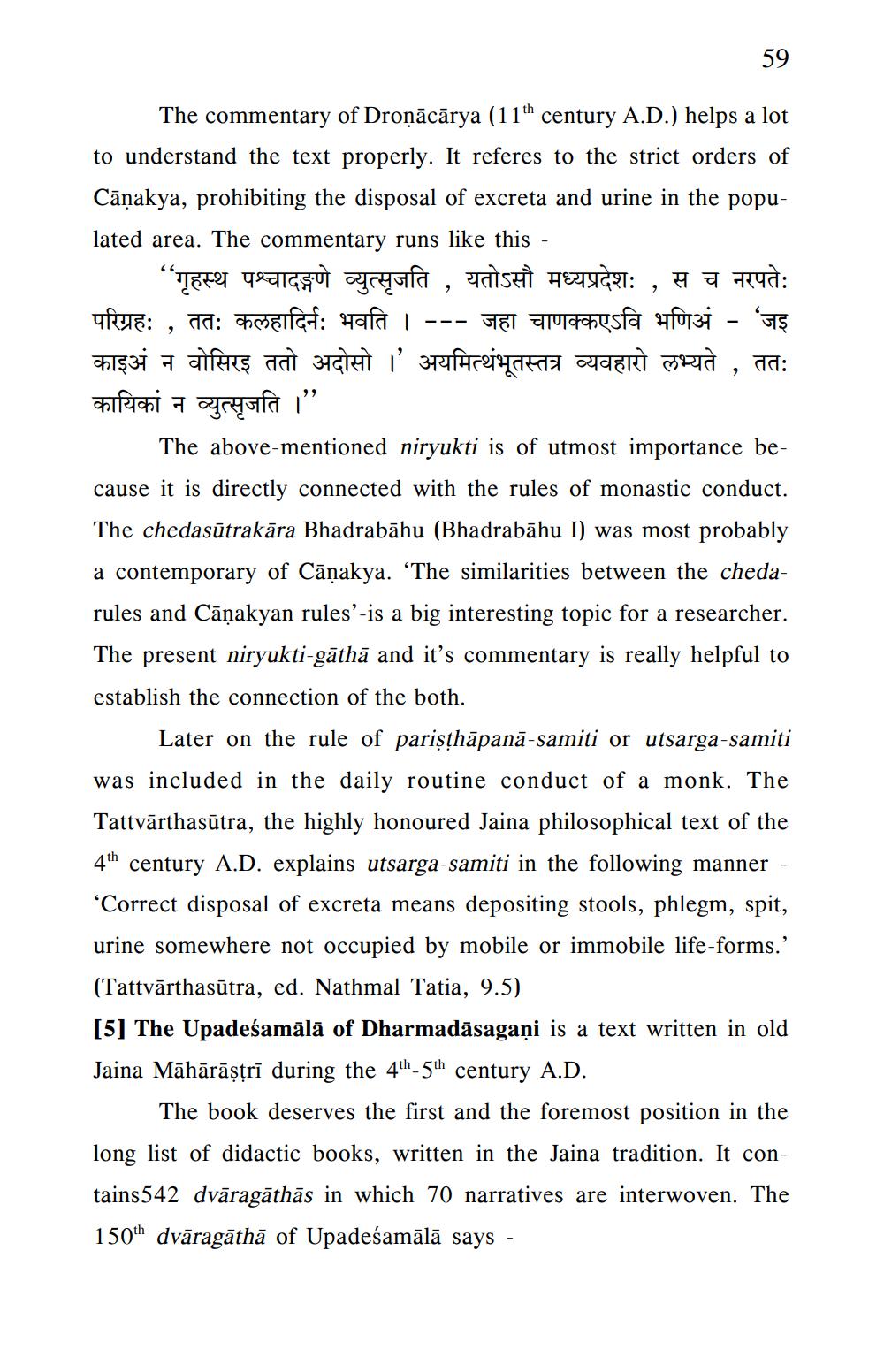________________
59
The commentary of Droņācārya (11th century A.D.) helps a lot to understand the text properly. It referes to the strict orders of Cāņakya, prohibiting the disposal of excreta and urine in the populated area. The commentary runs like this -
"TEFY YETIGSU afghafa , TTISET H21C3: , 7 a ted: YfUE: , da: focalfart: Halà 1 --- Je autosta fot31 - ' काइअं न वोसिरइ ततो अदोसो ।' अयमित्थंभूतस्तत्र व्यवहारो लभ्यते , तत: colici a frusia ”?
The above-mentioned niryukti is of utmost importance because it is directly connected with the rules of monastic conduct. The chedasūtrakāra Bhadrabāhu (Bhadrabāhu I) was most probably a contemporary of Cāņakya. “The similarities between the chedarules and Cāņakyan rules’-is a big interesting topic for a researcher. The present niryukti-gāthā and it's commentary is really helpful to establish the connection of the both.
Later on the rule of paristhāpanā-samiti or utsarga-samiti was included in the daily routine conduct of a monk. The Tattvārthasūtra, the highly honoured Jaina philosophical text of the 4th century A.D. explains utsarga-samiti in the following manner - *Correct disposal of excreta means depositing stools, phlegm, spit, urine somewhere not occupied by mobile or immobile life-forms.' (Tattvārthasūtra, ed. Nathmal Tatia, 9.5) [5] The Upadeśamālā of Dharmadāsagani is a text written in old Jaina Māhārāstrī during the 4th-5th century A.D.
The book deserves the first and the foremost position in the long list of didactic books, written in the Jaina tradition. It contains542 dvāragāthās in which 70 narratives are interwoven. The 150th dvāragāthā of Upadeśamālā says -




